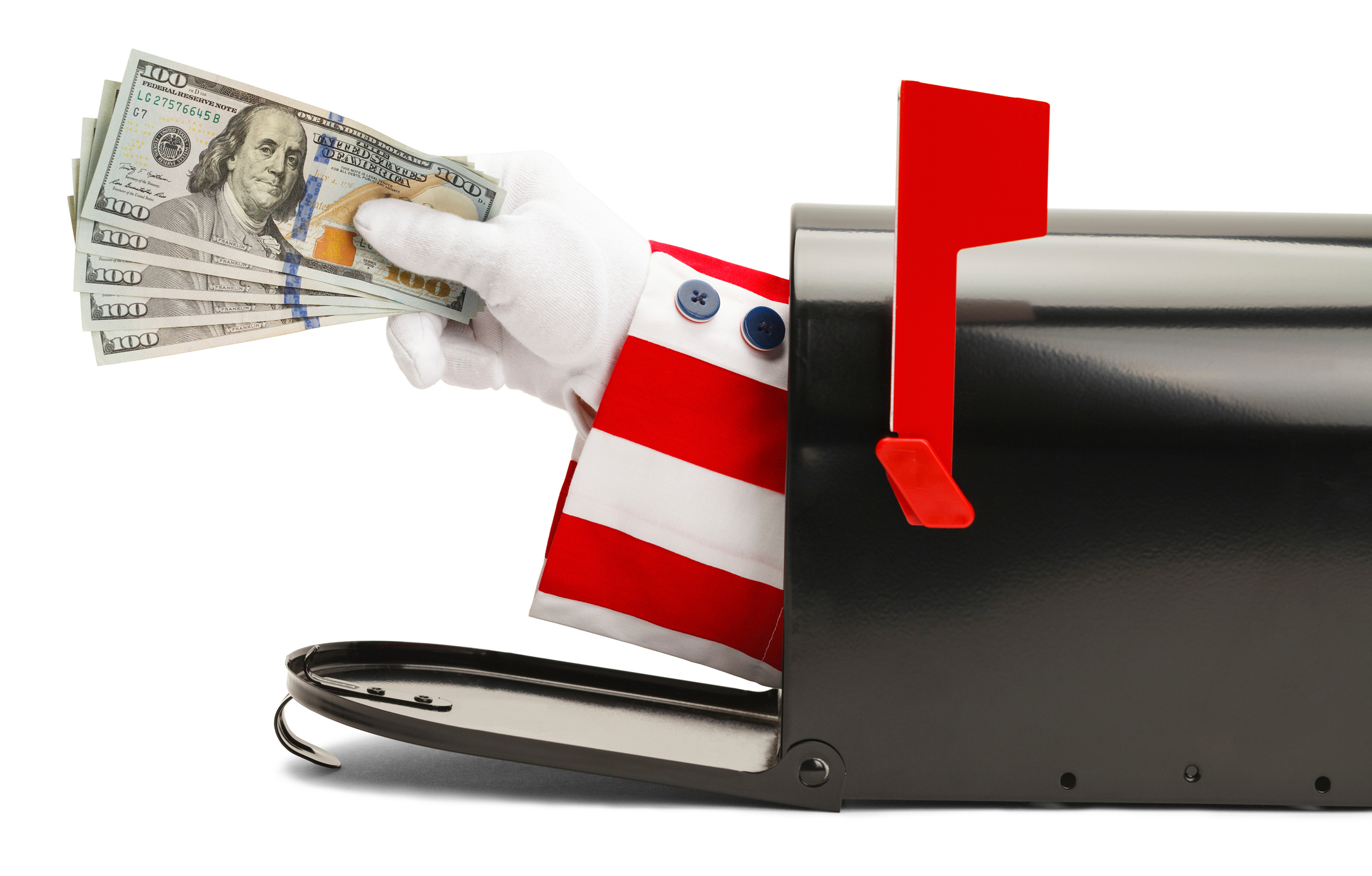Bigger Social Security Checks Are Arriving in April
Payments to eligible retired public sector employees will increase starting in April due to the Social Security Fairness Act (SSFA).


Retired public sector employees eligible for additional benefits due to the Social Security Fairness Act (SSFA) will finally see their monthly payments increase. If you received Social Security benefits after December 2023 and were impacted by the Government Pension Offset (GPO) and/or the Windfall Elimination Provision (WEP) reductions, you are going to see more money starting in April.
The lump sum retroactive payments started going out the last week of February. Most people should receive their payment by the end of March. The money will arrive the same way you receive your monthly benefits, either deposited into the bank account the Social Security Administration (SSA) has on file or a check by mail to your last known address. This retroactive payment will cover the increase in your benefit amount from January 2024 through March 2025, back to the month when WEP and GPO no longer applied.
The SSA has asked beneficiaries to wait until after receiving their April payment before contacting it to ask about monthly benefit amounts since the new amount will not be reflected until April (for the March payment).
From just $107.88 $24.99 for Kiplinger Personal Finance
Become a smarter, better informed investor. Subscribe from just $107.88 $24.99, plus get up to 4 Special Issues

Sign up for Kiplinger’s Free Newsletters
Profit and prosper with the best of expert advice on investing, taxes, retirement, personal finance and more - straight to your e-mail.
Profit and prosper with the best of expert advice - straight to your e-mail.
When are the bigger checks arriving?
Here is the payment schedule for April; find the day of the month you were born on the left side of the table. Then, look under each month for the specific payment date.
Birth date on | Payment date | |
|---|---|---|
1st – 10th | Wednesday, April 9 | Row 0 - Cell 2 |
11th – 20th | Wednesday, April 16 | Row 1 - Cell 2 |
21st – 31st | Wednesday, April 23 | Row 2 - Cell 2 |
The payment schedule is different for two groups of beneficiaries:
- If you received Social Security before May 1997, your SS benefits are paid on March 3
- if you receive both Social Security & SSI, SS benefits are paid on March 3 and SSI on March 1.
Lump sum retroactive payments
Retired public sector employees began receiving their back payments to reflect the retroactive application of the Social Security Fairness Act during the last week in February. As of March 4, the average retroactive payment received by 1,127,723 recipients was $6,710, with a total of $7.5 billion having been distributed.
These back payments cover what beneficiaries should have received in 2024 and the increase to monthly benefits for January and February in 2025.
Monthly increases for eligible beneficiaries will begin with their March payment (which arrives in April).
The SSA wants beneficiaries to wait until April to ask about the status of their retroactive payment, since these payments will be processed incrementally throughout March.
Complex cases will take longer
The SSFA required the SSA to adjust benefits for over 3 million people. Due to the retroactive application of the law to benefits received after December 2023, the SSA must adjust both past benefits as well as future benefits. SSA is helping most eligible beneficiaries now; as of March 14, 2025, the SSA has processed 75% or 2.2 million adjustments. The SSA expects that it could take up to a year to process manually the more complex cases.
Where to get help
If your lump sum hasn't arrived, you can call the SSA at 1-800-772-1213. If you’re deaf or hard of hearing and use TTY equipment, you can call the TTY number at 1-800-325-0778. Tell the representative you want to talk about your benefits and the Social Security Fairness Act or make an appointment to see someone at your local office.
The SSA is available by phone in most U.S. time zones Monday through Friday, 8 a.m. to 7 p.m. Wait times to speak to a representative are typically shorter in the morning, toward the end of the week, and toward the end of the month, according to the SSA website.
Related Content
Profit and prosper with the best of Kiplinger's advice on investing, taxes, retirement, personal finance and much more. Delivered daily. Enter your email in the box and click Sign Me Up.

Donna joined Kiplinger as a personal finance writer in 2023. She spent more than a decade as the contributing editor of J.K.Lasser's Your Income Tax Guide and edited state specific legal treatises at ALM Media. She has shared her expertise as a guest on Bloomberg, CNN, Fox, NPR, CNBC and many other media outlets around the nation. She is a graduate of Brooklyn Law School and the University at Buffalo.
-
 Holiday Tax Scams: 'Tis the Season to be Wary
Holiday Tax Scams: 'Tis the Season to be WaryTax Scams Navigating tax tricks of the holiday season may be daunting, but don't let that destroy your festive spirit
-
 Metro by T-Mobile Is Giving Away This Samsung Galaxy A16: Which Plans Are Eligible?
Metro by T-Mobile Is Giving Away This Samsung Galaxy A16: Which Plans Are Eligible?Metro by T-Mobile is offering free Samsung Galaxy A16 phones on eligible plans right now. Here’s how the deal works.
-
 I Drive and Collect Classic Cars: Here’s How I Got Started
I Drive and Collect Classic Cars: Here’s How I Got StartedAre classic cars a hobby or an investment strategy — or both? Either way, the vintage car scene is much cooler and more affordable than you think.
-
 Metro by T-Mobile Is Giving Away This Samsung Galaxy A16: Which Plans Are Eligible?
Metro by T-Mobile Is Giving Away This Samsung Galaxy A16: Which Plans Are Eligible?Metro by T-Mobile is offering free Samsung Galaxy A16 phones on eligible plans right now. Here’s how the deal works.
-
 I Drive and Collect Classic Cars: Here’s How I Got in the Game Without Spending a Fortune
I Drive and Collect Classic Cars: Here’s How I Got in the Game Without Spending a FortuneAre classic cars a hobby or an investment strategy — or both? Either way, the vintage car scene is much cooler and more affordable than you think.
-
 My First $1 Million: Retired Middle School Teacher, 68, North Carolina
My First $1 Million: Retired Middle School Teacher, 68, North CarolinaEver wonder how someone who's made a million dollars or more did it? Kiplinger's My First $1 Million series uncovers the answers.
-
 The $183,000 RMD Shock: Why Roth Conversions in Your 70s Can Be Risky
The $183,000 RMD Shock: Why Roth Conversions in Your 70s Can Be RiskyConverting retirement funds to a Roth is a smart strategy for many, but the older you are, the less time you have to recover the tax bite from the conversion.
-
 A Financial Pro Breaks Retirement Planning Into 5 Manageable Pieces
A Financial Pro Breaks Retirement Planning Into 5 Manageable PiecesThis retirement plan focuses on five key areas — income generation, tax management, asset withdrawals, planning for big expenses and health care, and legacy.
-
 4 Financial To-Dos to Finish 2025 Strong and Start 2026 on Solid Ground
4 Financial To-Dos to Finish 2025 Strong and Start 2026 on Solid GroundDon't overlook these important year-end check-ins. Missed opportunities and avoidable mistakes could end up costing you if you're not paying attention.
-
 9 Types of Insurance You Probably Don't Need
9 Types of Insurance You Probably Don't NeedFinancial Planning If you're paying for these types of insurance, you may be wasting your money. Here's what you need to know.
-
 Are You Putting Yourself Last? The Cost Could Be Your Retirement Security
Are You Putting Yourself Last? The Cost Could Be Your Retirement SecurityIf you're part of the sandwich generation, it's critical that you don't let the needs of your aging parents come at the expense of your future.